Nature-based solutions to our societal challenges
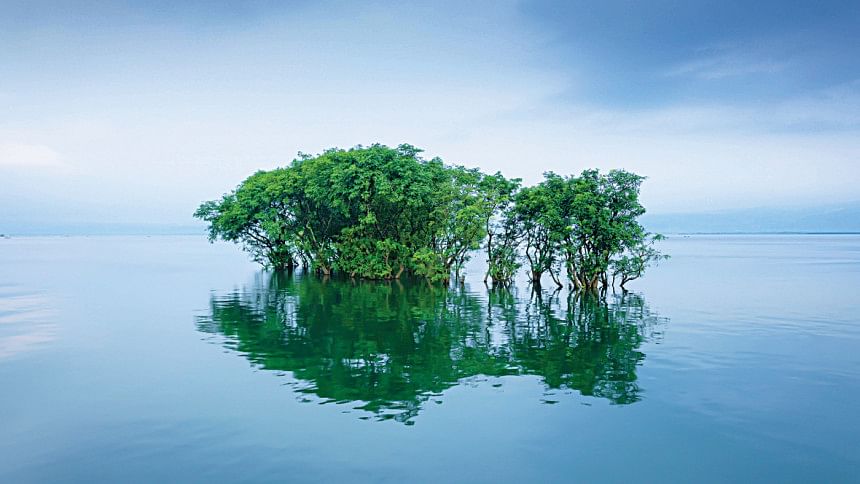
As we enter the third year of the Covid-19 pandemic, the societal challenges we were fighting in the pre-Covid times all got worse over the past two years—be it extreme poverty, food and water crises, biodiversity loss, ecological degradation, or climatic change and associated disasters. But, can nature still be a part of tackling these challenges?
When we harness nature to address our problems, we essentially implement nature-based solutions (NbS). While no UN agencies have adopted a universal definition of NbS yet, let's consider the most widely accepted definition suggested by the world's oldest and largest environmental network IUCN (International Union for Conservation of Nature)—NbS interventions are the "Actions to protect, sustainably manage, and restore natural or modified ecosystems, that address societal challenges effectively and adaptively, simultaneously providing human well-being and biodiversity benefits."
NbS is separate from our typical rural development work involving natural resource management and pure conservation work. Community development often offers benefits to the human beings through, for example, crop cultivation, fish farming, and livestock rearing. Conservation, on the other hand, works essentially towards protecting certain species or ecosystems. NbS, however, offer both human and biodiversity benefits, not just one. Engaging local people in salt-tolerant rice cultivation in coastal Bangladesh to adapt to climate change, growing one tree species miles after miles as road-side plantation under social forestry, or using bamboo fence (bandal) to protect river bank from wave erosion, for example, are good practices benefiting people. But none is NbS as they don't improve biodiversity directly. On the other hand, protecting the Sundarbans from over-exploitation through participatory models, sustainably managing Moulvibazar's Baikka Beel with the local community, restoring degraded coastal forests with diverse mangrove species by engaging local stakeholders, or creating a new wetland to slow down flood waters from entering an urban area are examples of NbS, as they benefit both people and biodiversity.
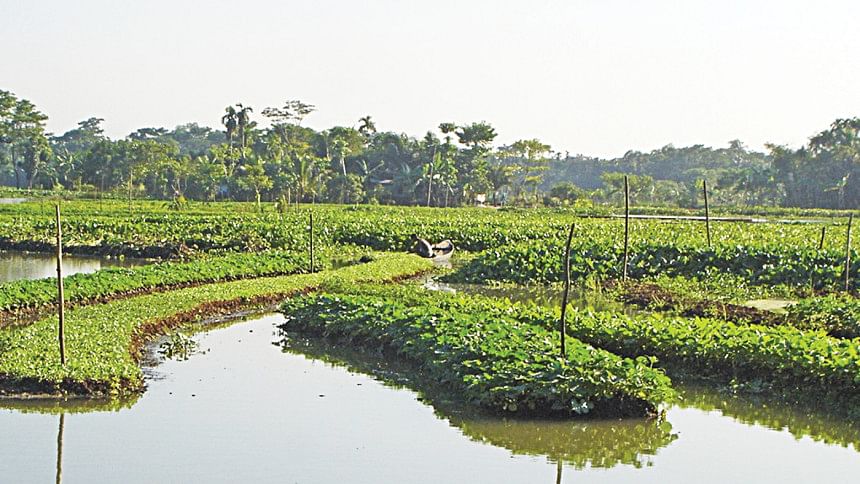
Over the last couple of years, NbS has widely been recognised by a wide range of national and global entities. In November 2021, for example, the highly anticipated Glasgow COP26 (Conference of the Parties) on climate change ended by drafting the "Climate Pact". This decision document doesn't use the term Nature-based Solutions or NbS, but has sufficiently incorporated the philosophy and approaches of NbS. Since September 2020, Bangladesh has been hosting the South Asia regional office of the Global Center on Adaptation (GCA). Infrastructure and NbS is one of the seven on-going programmes of the GCA. Recent analyses show that countries, especially the developing ones, identify NbS actions in their Nationally Determined Contributions (NDCs) pledges to reduce carbon emissions by 2030. In September 2021, IUCN World Congress held in Marseille, France declared a new Collaborative Certification Scheme to ensure sustainable NbS actions and impacts, which is expected to be introduced in 2022.
While global climate change discourses strongly embrace NbS as a concept, it is a bit different elsewhere. For example, in July 2021, the Convention on Biological Diversity (CBD), a multilateral global entity on biodiversity conservation, launched its first draft of the "Post-2020 Global Biodiversity Framework". This 12-page document outlines national to global conservation strategies and actions up to 2050, but doesn't recognise NbS per se as a concept or a guiding philosophy.
There are several reasons behind the increasing national and global support to NbS. Once implemented, NbS intervention can give multiple benefits. Let's take conservation of the Sundarbans as an example of NbS. It protects us from cyclones and storm surges, captures carbon from the atmosphere, gives shelter to rich biodiversity, provides us with food, supports local livelihoods, gives space for eco-tourism, and upholds our culture and heritage. Every year, all the mangroves of the world give more than USD 65 billion coastal flood protection. Bangladesh enjoys USD 1.56 billion benefit annually from its mangrove forests. The country is also among the top three, along with India and Vietnam, receiving highest benefits from mangroves by protecting its people.
It is, however, logical to ask if NbS are sufficiently effective as well as cost-effective when compared with typical grey or engineering solutions. Studies show that, to tackle riverine floods, NbS, such as slope revegetation and wetland protection or creation, are more effective than engineering solutions, such as check dams, artificial water storage alternatives, and buffer tanks. From an economic point of view, an analysis of 52 coastal protection projects in the USA showed that, when wave height is low and water depth is high, salt marshes and mangroves are two to five times cheaper than the engineering options.
NbS, however, suffer from some challenges. For example, NbS interventions take time to give us their full benefits. Because of limited evidence of NbS effectiveness and certain misconceptions, we see inadequate policy and political commitments as well as limited funds blocking the scaling up of proven NbS. Conflicts over NbS sites are reported due to land tenure issues. In
absence of effective governance, we see "greenwashing" in the name of NbS depriving the local people from their traditional rights. Unequitable benefit-sharing from new NbS projects can also exacerbate pre-project tension, instability, and conflict situation.
Although NbS offer long-term, multiple benefits and are cost-effective and easier to maintain, it is not that only such ecosystem-based approaches or green solutions can act alone. It is also not that all engineering or grey solutions should be gradually replaced by NbS. Our core development philosophy should be to harness ecosystems' services and processes as much as possible. In many cases, especially in a country like Bangladesh, we need to mix green (biodiversity), grey (engineering), and blue (water) solutions to bring the best out of these three options. A good example of such mix can be seen in Gabura Union of Satkhira which was severely affected by Cyclone Aila back in 2009. In 2014, with Union Parishad and local people, CNRS and IUCN established a mangrove plantation on the chars in front of the polder protecting a part of Gabura. Seven years on, this grey-green combination continues protecting the people and their livelihoods from cyclones and storm surges.
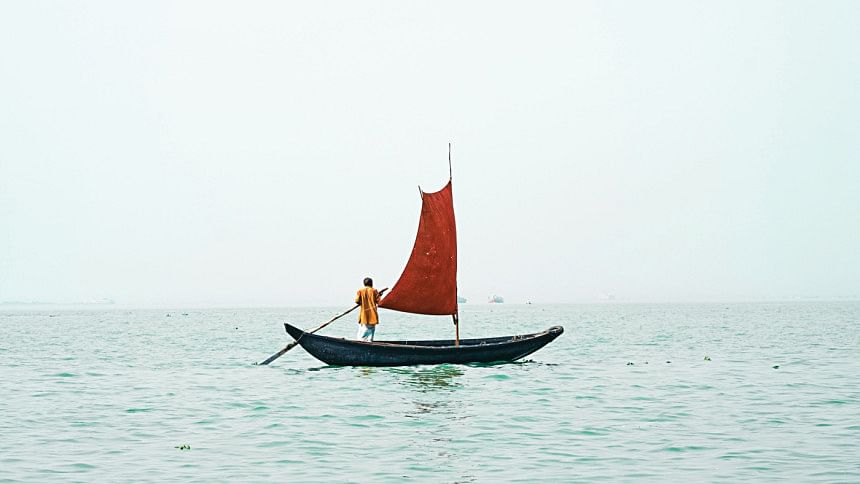
Although the concept NbS was coined recently, Bangladesh has been embracing NbS since long. Floating agriculture, for example, has been a traditional practice in the greater Barishal-Faridpur region for a couple of centuries. We have been creating green belt through coastal afforestation since 1966. We have been practicing community-based sustainable management of wetlands and forests through development projects since the 1990s. In the past decade, our short-term plans (e.g., Seventh and Eighth Five-Year Plans), medium-term plans (e.g., Perspective Plan of Bangladesh 2021-2041, Mujib Climate Prosperity Plan Decade 2030), and long-term plans (e.g., Bangladesh Delta Plan 2100) have integrated ecosystem-based approaches into our development pathways. Among these, the Mujib Plan is apparently the first-ever national document that explicitly mentions and extensively adopts NbS as a concept.
A comprehensive analysis of the effectiveness of NbS in Bangladesh, however, was absent until November 2021 when a systematic review was published in a peer-reviewed journal titled Frontiers in Environmental Science. The analysis led by the University of Oxford identifies 19 major NbS interventions implemented in a wide range of ecosystems: coast, inland wetland, terrestrial forest, agroforestry and homestead gardens, cropland, and urban areas. Most extensively studied NbS in Bangladesh are conservation agriculture and protection and restoration of mangroves, terrestrial forests, and wetlands.
It is, however, logical to ask if NbS are sufficiently effective as well as cost-effective when compared with typical grey or engineering solutions. Studies show that, to tackle riverine floods, NbS, such as slope revegetation and wetland protection or creation, are more effective than engineering solutions, such as check dams, artificial water storage alternatives, and buffer tanks. From an economic point of view, an analysis of 52 coastal protection projects in the USA showed that, when wave height is low and water depth is high, salt marshes and mangroves are two to five times cheaper than the engineering options.
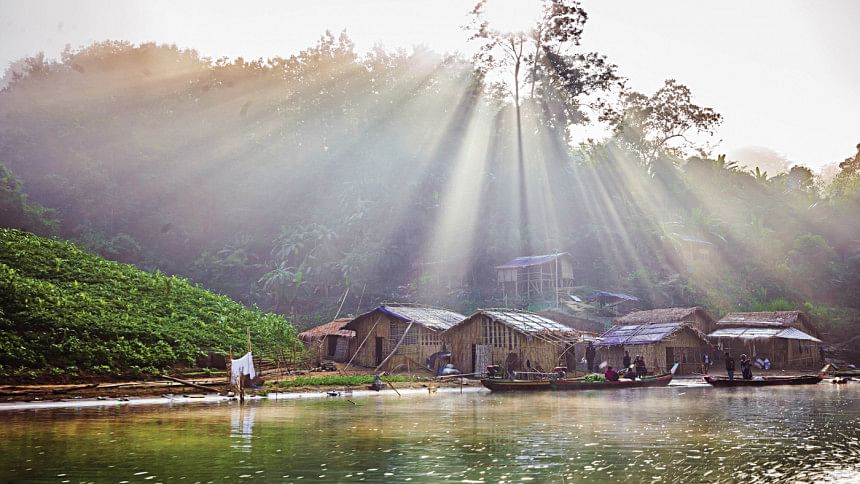
NbS, however, suffer from some challenges. For example, NbS interventions take time to give us their full benefits. Because of limited evidence of NbS effectiveness and certain misconceptions, we see inadequate policy and political commitments as well as limited funds blocking the scaling up of proven NbS. Conflicts over NbS sites are reported due to land tenure issues. In
absence of effective governance, we see "greenwashing" in the name of NbS depriving the local people from their traditional rights. Unequitable benefit-sharing from new NbS projects can also exacerbate pre-project tension, instability, and conflict situation.
Although NbS offer long-term, multiple benefits and are cost-effective and easier to maintain, it is not that only such ecosystem-based approaches or green solutions can act alone. It is also not that all engineering or grey solutions should be gradually replaced by NbS. Our core development philosophy should be to harness ecosystems' services and processes as much as possible. In many cases, especially in a country like Bangladesh, we need to mix green (biodiversity), grey (engineering), and blue (water) solutions to bring the best out of these three options. A good example of such mix can be seen in Gabura Union of Satkhira which was severely affected by Cyclone Aila back in 2009. In 2014, with Union Parishad and local people, CNRS and IUCN established a mangrove plantation on the chars in front of the polder protecting a part of Gabura. Seven years on, this grey-green combination continues protecting the people and their livelihoods from cyclones and storm surges.
Although the concept NbS was coined recently, Bangladesh has been embracing NbS since long. Floating agriculture, for example, has been a traditional practice in the greater Barishal-Faridpur region for a couple of centuries. We have been creating green belt through coastal afforestation since 1966. We have been practicing community-based sustainable management of wetlands and forests through development projects since the 1990s. In the past decade, our short-term plans (e.g., Seventh and Eighth Five-Year Plans), medium-term plans (e.g., Perspective Plan of Bangladesh 2021-2041, Mujib Climate Prosperity Plan Decade 2030), and long-term plans (e.g., Bangladesh Delta Plan 2100) have integrated ecosystem-based approaches into our development pathways. Among these, the Mujib Plan is apparently the first-ever national document that explicitly mentions and extensively adopts NbS as a concept.
A comprehensive analysis of the effectiveness of NbS in Bangladesh, however, was absent until November 2021 when a systematic review was published in a peer-reviewed journal titled Frontiers in Environmental Science. The analysis led by the University of Oxford identifies 19 major NbS interventions implemented in a wide range of ecosystems: coast, inland wetland, terrestrial forest, agroforestry and homestead gardens, cropland, and urban areas. Most extensively studied NbS in Bangladesh are conservation agriculture and protection and restoration of mangroves, terrestrial forests, and wetlands.
The top five outcomes of these NbS interventions were food production, security and nutrition, biodiversity, climate change mitigation, fishing, and coastal flood protection. This study, however, revealed that many of our development and environmental projects which include NbS interventions remain unrecognised due to a lack of proper documentation. For example, NbS are widely being practiced in the Rohingya refugee camps in Cox's Bazar, but are not sufficiently documented besides in a couple of opinion pieces published in The Daily Star.
As we are understanding NbS better, it is crucial to mainstream NbS into our development actions. I highlight four specific areas for urgent intervention. First, as Bangladesh looks forward to graduating from the Least Developed Country status in the next four years, we should install a mechanism where all our policies are made and practices are improved based upon scientific research and evidence. The present attention to NbS can help us to make such a systemic change. For example, the University of Oxford and the International Centre for Climate Change and Development (ICCCAD) are currently gathering evidence of economic recovery potential of Bangladesh's NbS after a shock, such as economic recession or natural hazard. Such research can guide our post-Covid economic recovery plans and encourage investments in NbS interventions, which can create, restore and retain jobs, diversify livelihoods, improve local productivity, and support social equity.
Second, for effective project formulation and execution, we need to incorporate the principles and standards of NbS in the government's soon-to-be updated Development Project Proforma (DPP). IUCN's Global Standard for NbS could be useful for this. This Standard can guide NbS elements in project design by considering issues, such as scale of the societal challenge to be addressed by an NbS, people's participation in it, its financial feasibility, net biodiversity gains from it, and calculation of trade-offs of the proposed NbS. The Standard can also guide us to adaptively manage the NbS beyond the project tenure and explore its scaling-up opportunities. It should be easier to incorporate NbS Standard in the revised DPP, since the current DPP already appreciates environmental sustainability, biodiversity, ecosystem services, and climate change. We also need to update our procurement policies, which often select the options that are the cheapest and give immediate benefits. But we need to change this mindset. We have to be ambitious keeping in mind long-term benefits, not focusing only on short-term gains.
Third, unlike climate finance, we rarely talk about conservation finance. Every year Bangladesh's Finance Division prepares a climate budget. In the current fiscal year (2021-2022), our climate budget is about USD 3 billion, which is 4.16 percent of our national budget and 0.73 percent of our GDP. We can start a national dialogue by identifying how much of our annual climate budget is spent on NbS. Bangladesh can also lead the way in conservation finance by establishing the "Biodiversity Conservation Fund" already provisioned under the Article 36 of the Bangladesh Biodiversity Act, 2017. Our experience of creating and managing the Bangladesh Climate Change Trust Fund (BCCTF) could be an added advantage. We may also bring in finance from the private sector or introduce "blue bond" for marine biodiversity conservation, as proposed in the Mujib Plan. But, we must be careful about "greenwashing" in the name of NbS.
Finally, climate change is no longer a challenge to be faced by the people living on earth today. It is a transgenerational crisis that will continue affecting generations to come. Our youths are at the forefront to make the world leadership recognise that reality. Similarly, over the last 50 years, we have destroyed our natural ecosystems so much that one in every eight species of this planet will be extinct over the next few decades. To tackle these two interconnected transgenerational crises, we need transgenerational actions. And, NbS can offer that. An NbS project may end in three years, a human generation may complete its cycle in 30 years, but a protected forest, a restore wetland, a sustainably managed coast are timeless. We, therefore, should engage our youths in NbS conversations and actions.
Dr Haseeb Md Irfanullah is an independent consultant working on environment, climate change, and research systems. His Twitter handle is @hmirfanullah

 For all latest news, follow The Daily Star's Google News channel.
For all latest news, follow The Daily Star's Google News channel. 


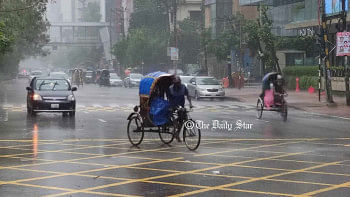
Comments